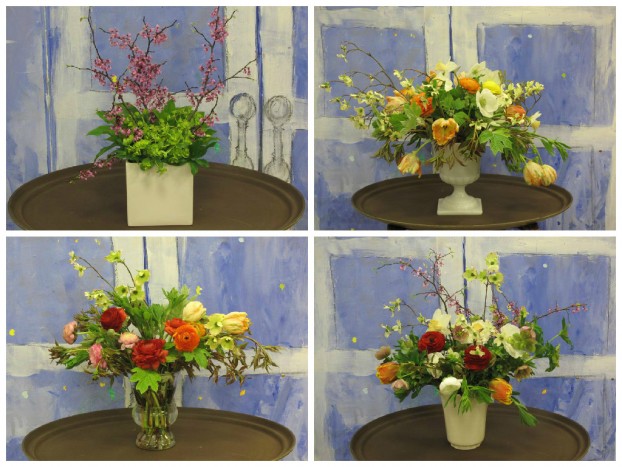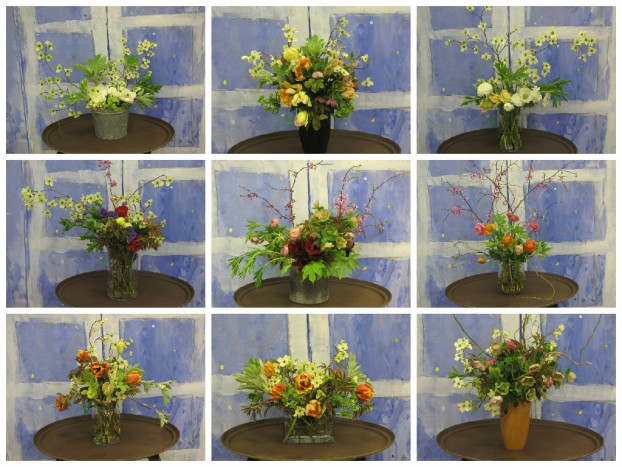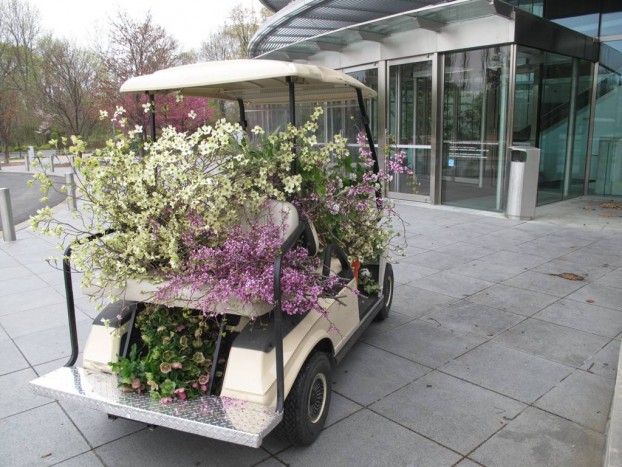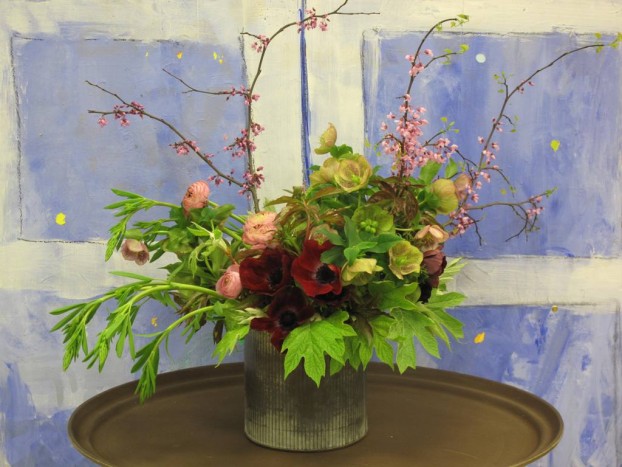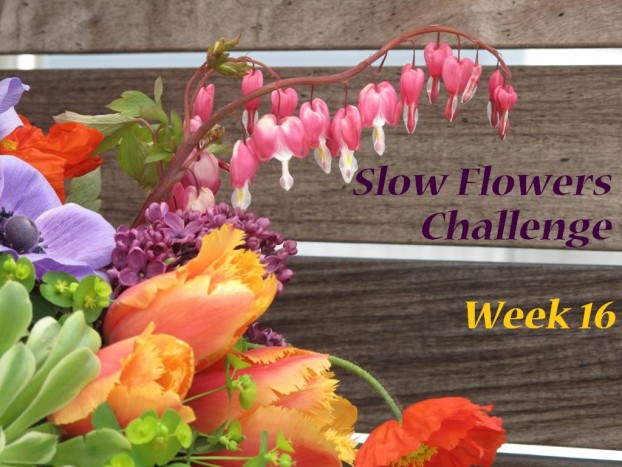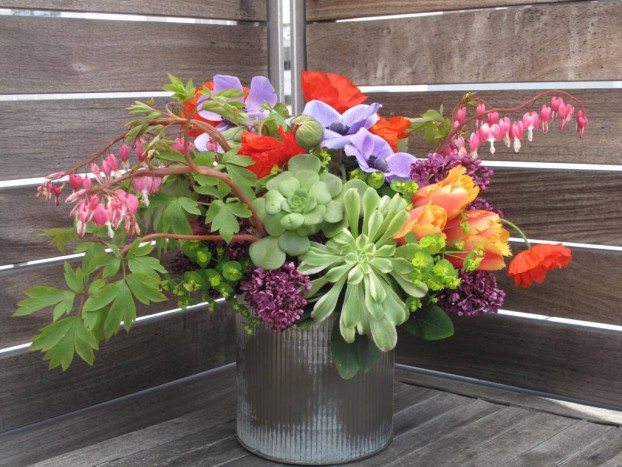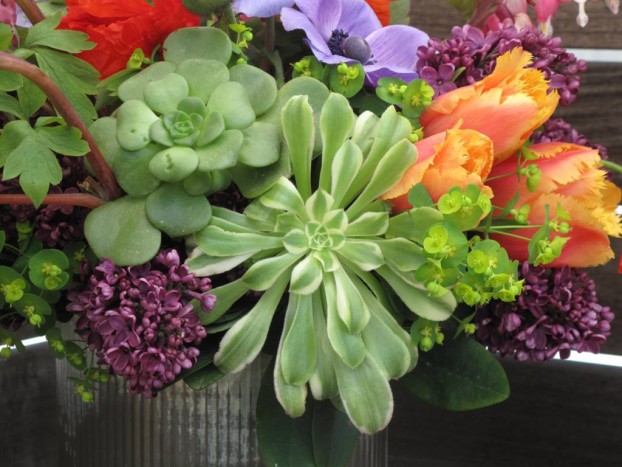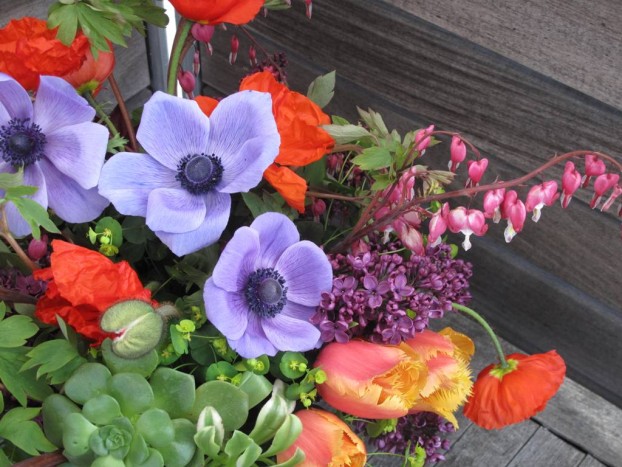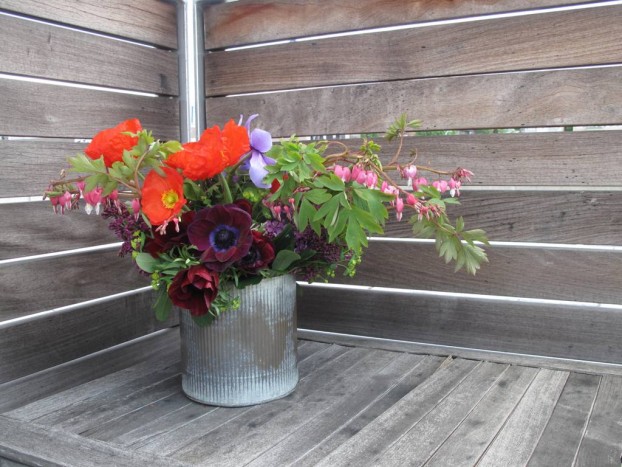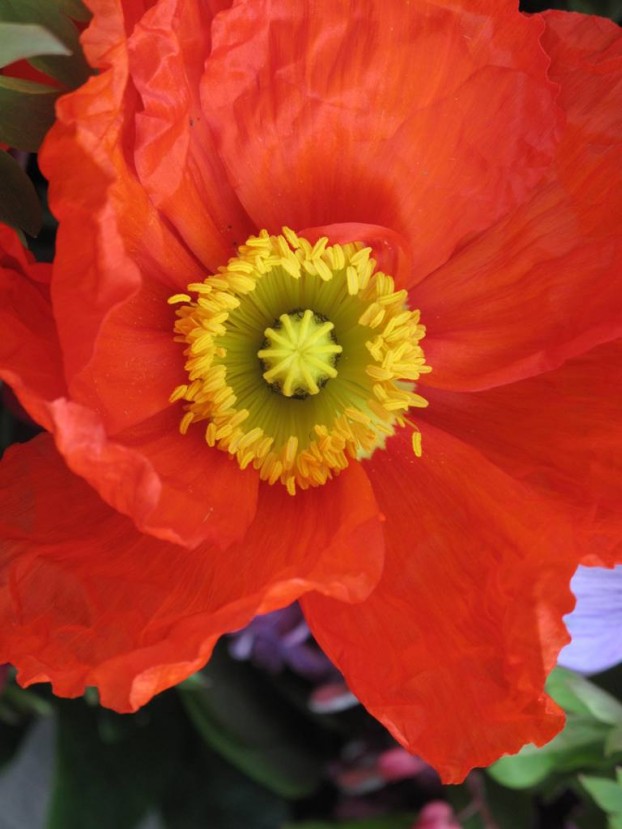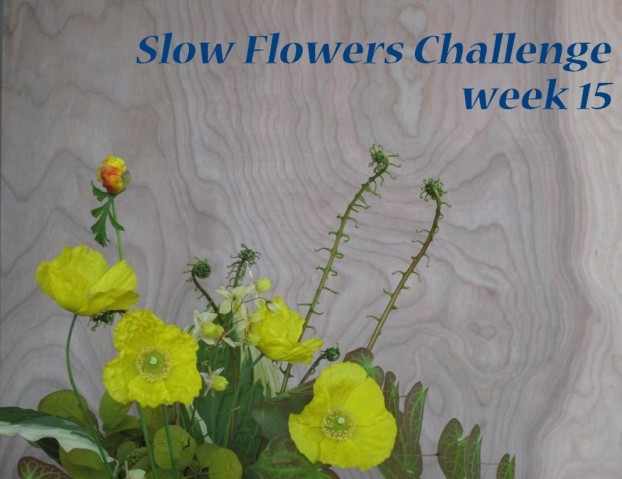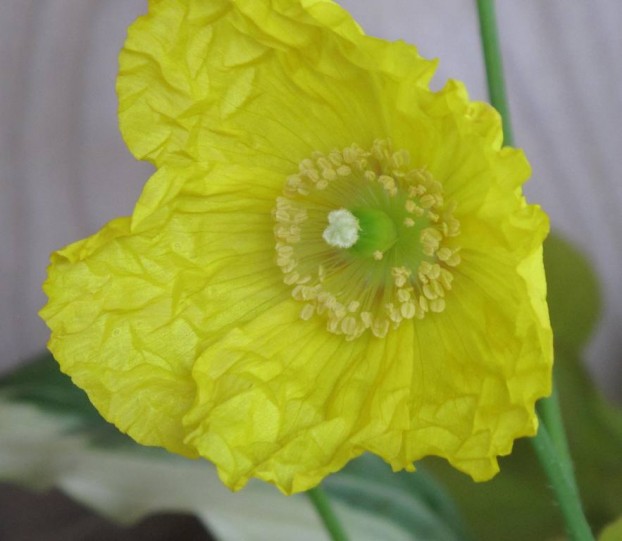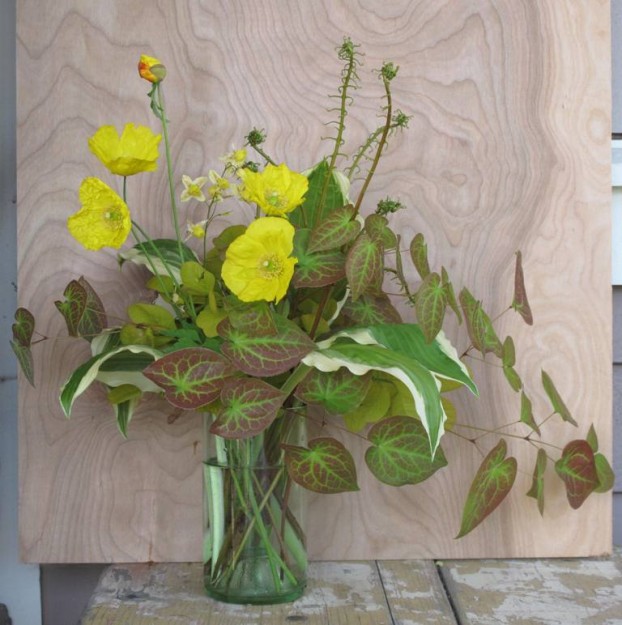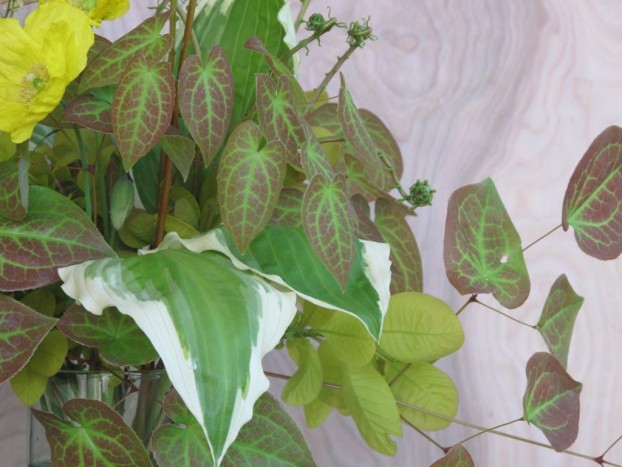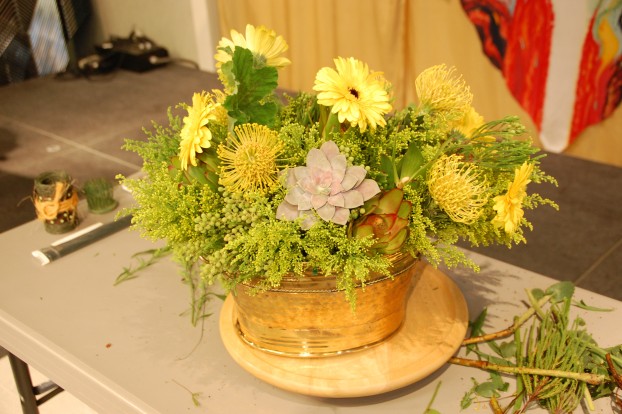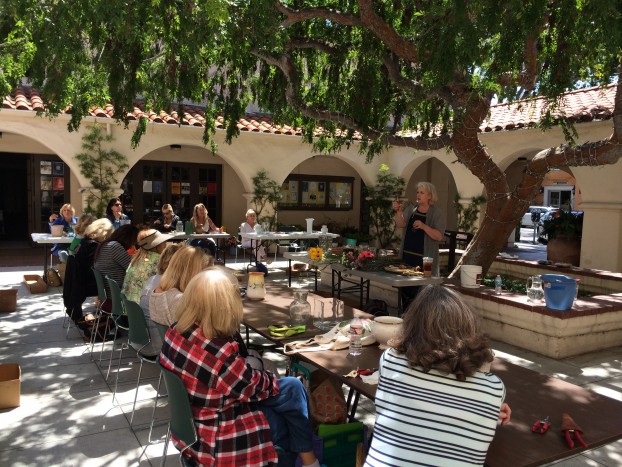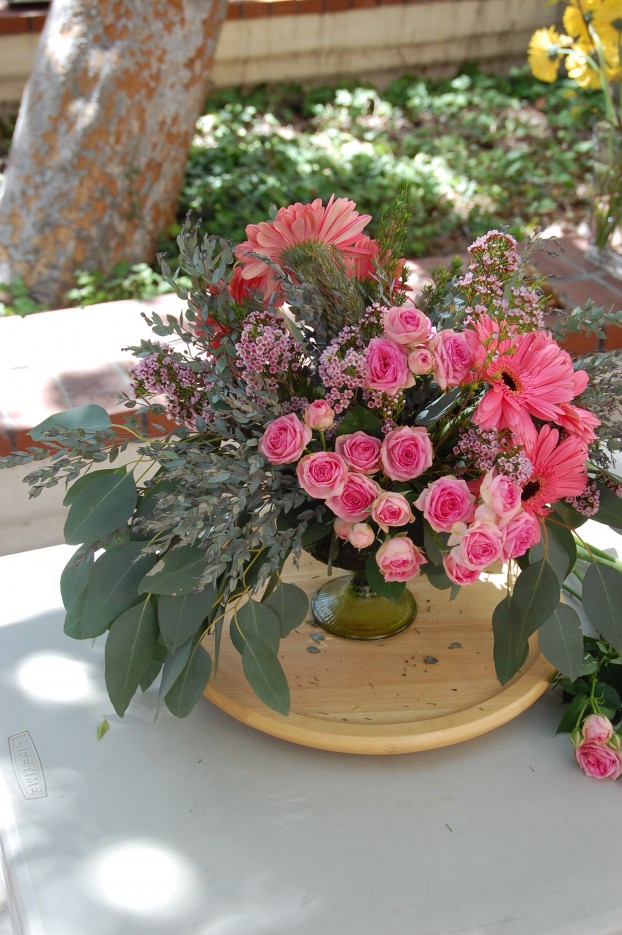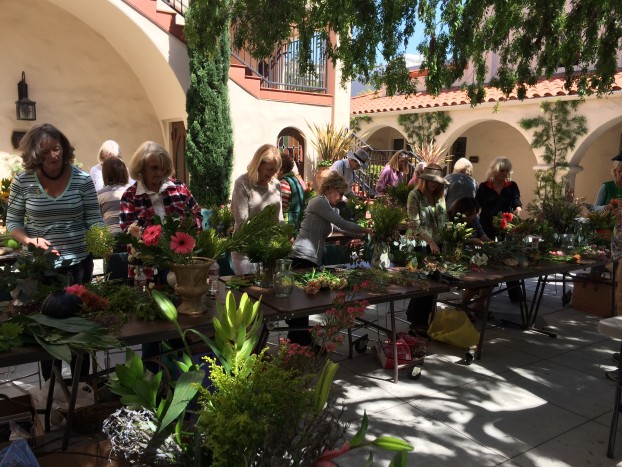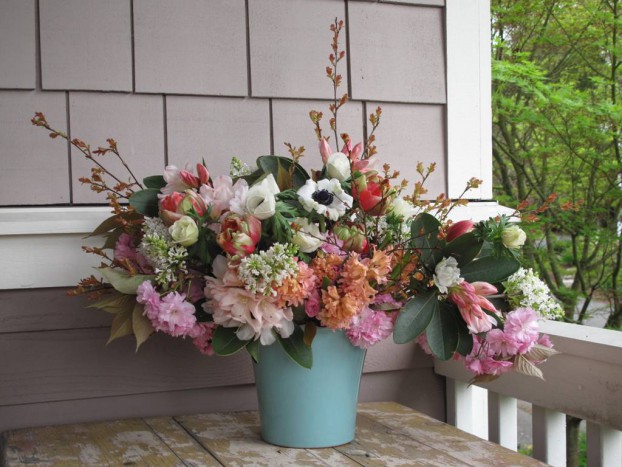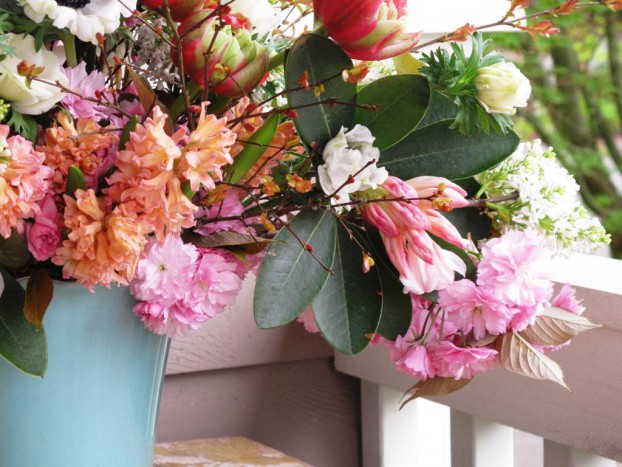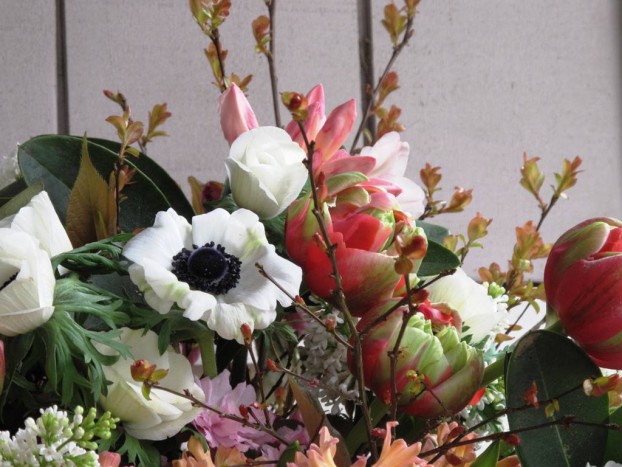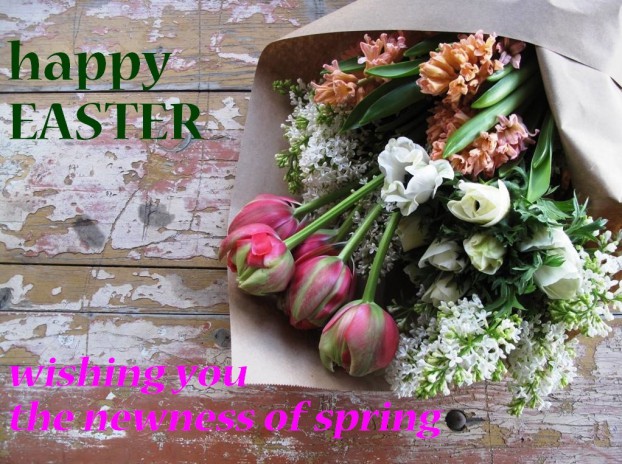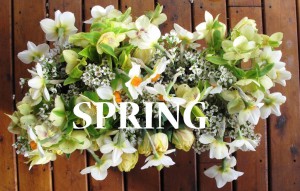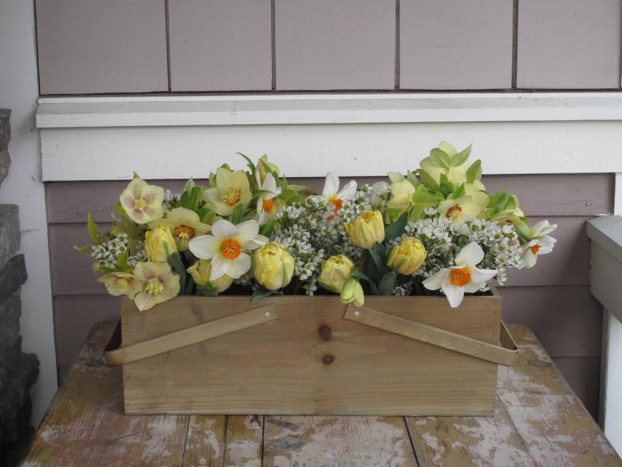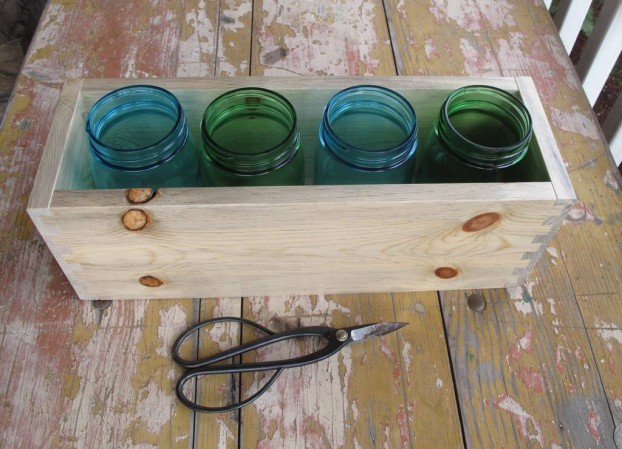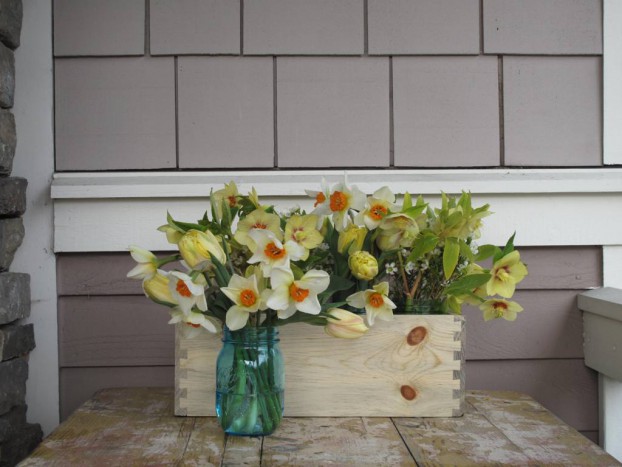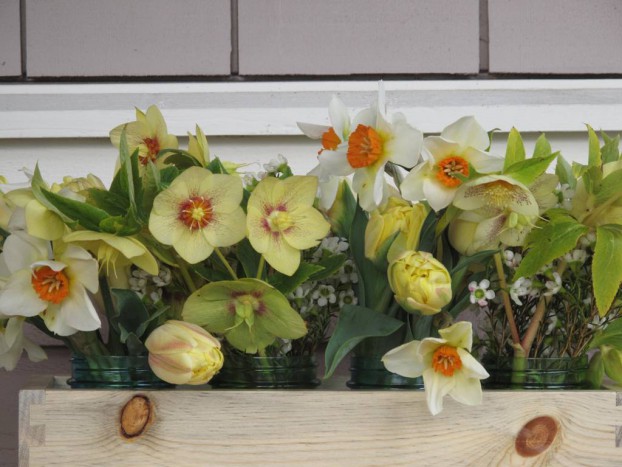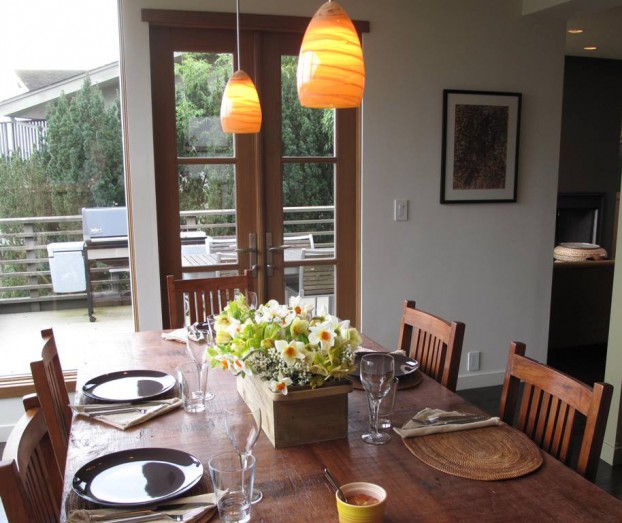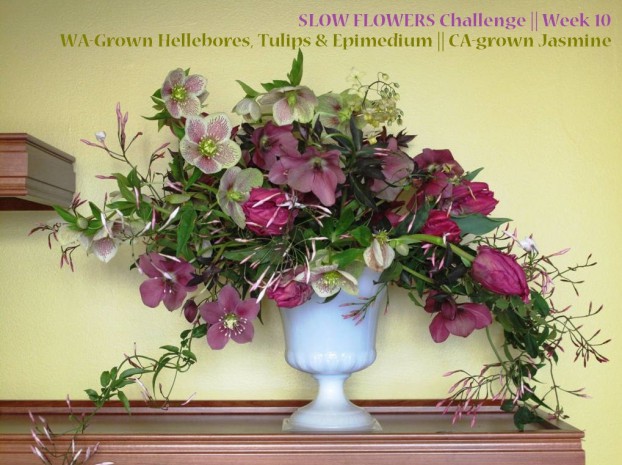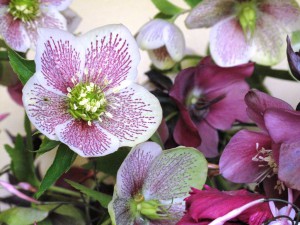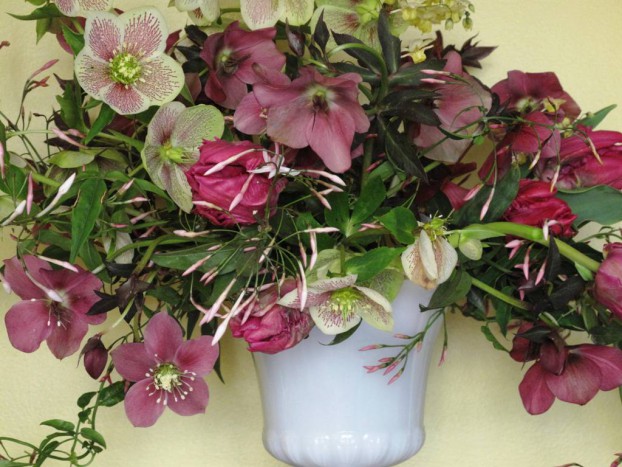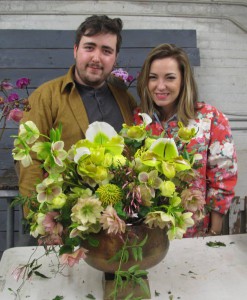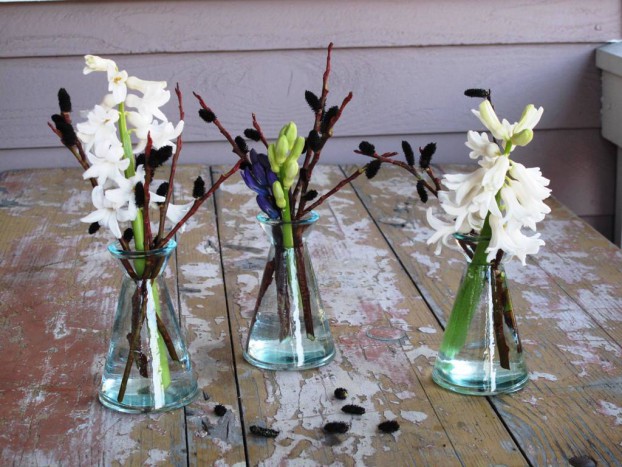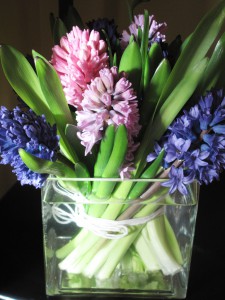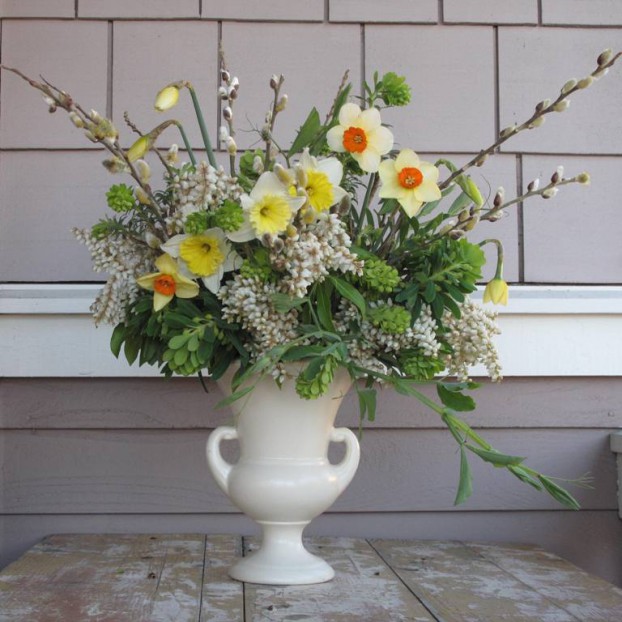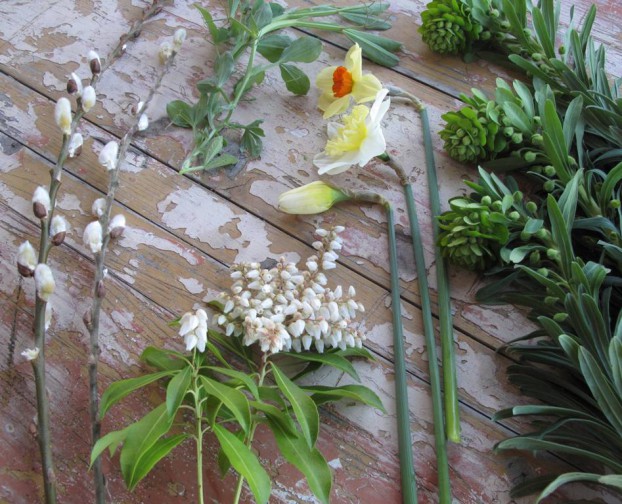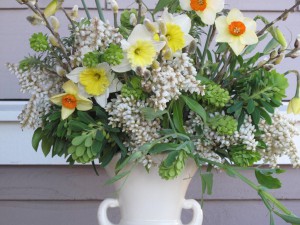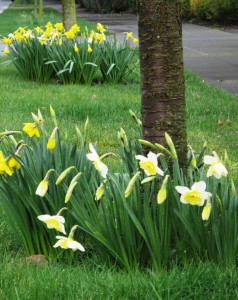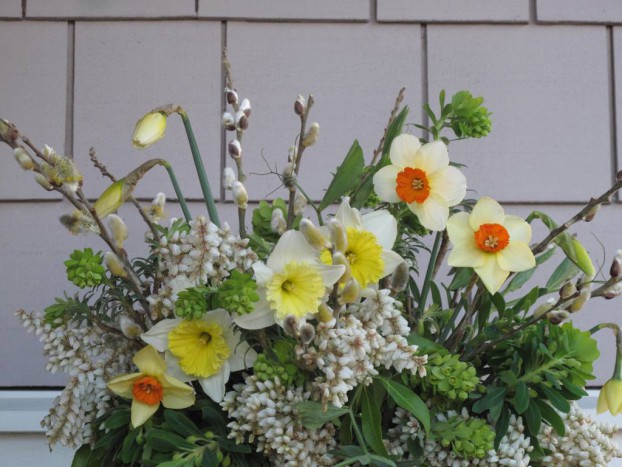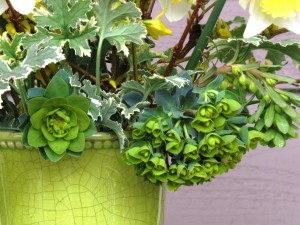This was a week of flowers, beginning on March 22nd with my “Four Seasons Cutting Garden” lecture at the San Francisco Flower & Garden Show. Here are some one of my favorite images shared in my illustrated presentation.
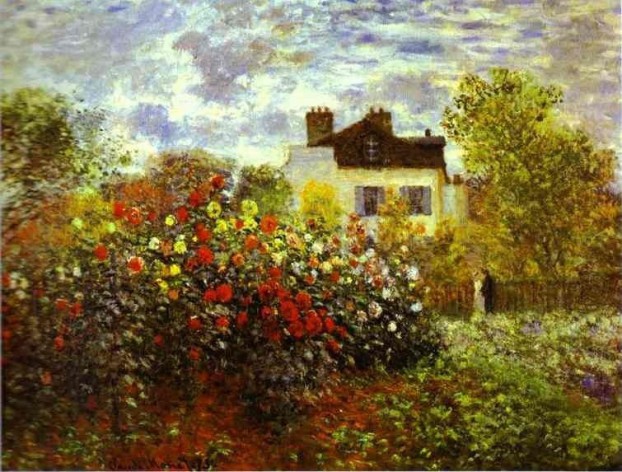
I call this my “dream cutting garden,” painted by Claude Monet in 1873. The Garden at Argenteuil (Dahlias)

Overwhelming or Inspiring? A design scheme from a vintage garden book, Hardy Perennials and Herbaceous Borders, 1912. “Plan of a Rainbow Border”
I also spent time interviewing several flower farmers and floral designers, which you can hear on the Slow Flowers Podcast in coming weeks. Subscribe here for free downloads from iTunes.
This week I have two arrangements to share with you. The first was created as a demonstration ofFloral Soil, the 100% plant-based, USA-made, compostable alternative to florist’s foam. The occasion was a workshop taught by Alicia Schwede of Flirty Fleurs, focusing on “Elevated Centerpieces.”
Floral Soil’s creator Mickey Blake and I participated in the workshop to gather photos and content for her web site. I brought along my favorite glass compote, a pedestal fruit dish that was my great-grandmother’s.
Thanks to very excellent instruction from Alicia, here’s what I created. There are three pieces that created the mechanics to hold the flowers and foliage: (1) a 3-by-4-by-5-inch piece of Floral Soil; (2) a sheet of chicken wire wrapped from rim to rim of the vase; and (3) 1/4-inch waterproof cloth tape to hold it in place.
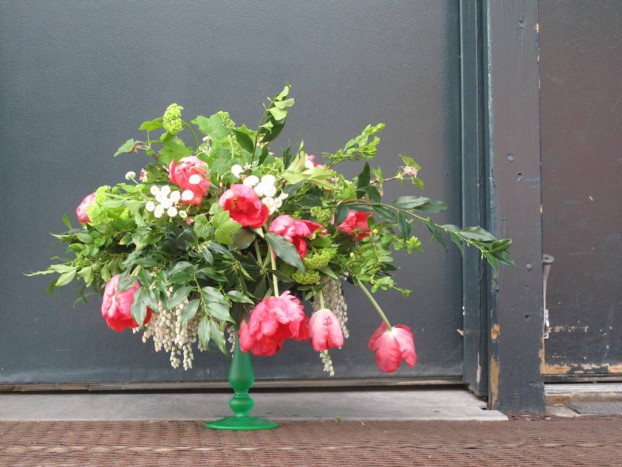
Such an elegant piece with a slender pedestal that resembles a candlestick holder. It measures 9-1/2 inches tall and the bowl is 10-inches in diameter. It is only 2-1/2 inches deep – just the challenge for NOT using foam!
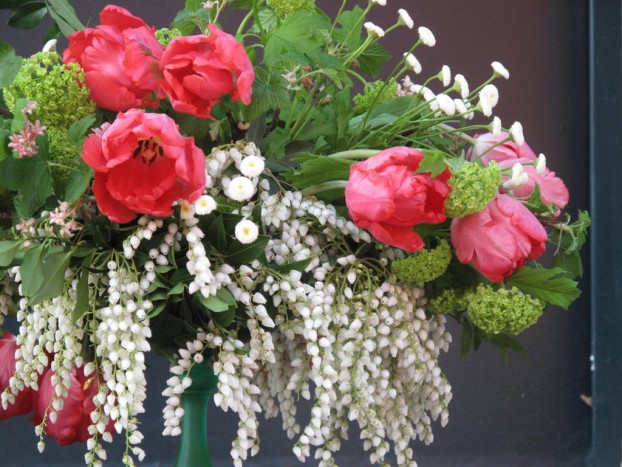
A combination of my own garden cuttings plus West Coast flowers and foliage
Ingredients:
From my garden: White-blooming Pieris japonica, glossy green Sarcococca ruscifolia (also called sweet box); common boxwood; and flowering currant, a native shrub (Ribes sanguineum).
Provided by Alicia: Pink tulips and stems of lime green viburnum (most likely from British Columbia) and button-like white feverfew (Chrysanthemum parthenium), sourced from California.
A Slow Flowers Birthday Bouquet
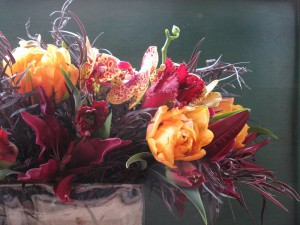
Vivid details of melon orange and dark plum hues.
Last year, prior to the launch of Slowflowers.com, I ran a successful campaign on Indiegogo and raised nearly $18,500 from more than 200 supporters.
Each contributor had the option of selecting a thank-you gift for their donation. One of the items was a Bouquet of American Flowers.
It has been fun to make those supporters happy as they redeem this “perk.”
For the Seattle folks, I’ve been making the bouquets and yesterday was a chance to give my friend Sue Nevler the flowers coming to her. She wanted to surprise her husband Steve Gattis with an arrangement of flowers for his birthday. Here’s what I created and where the blooms originated:
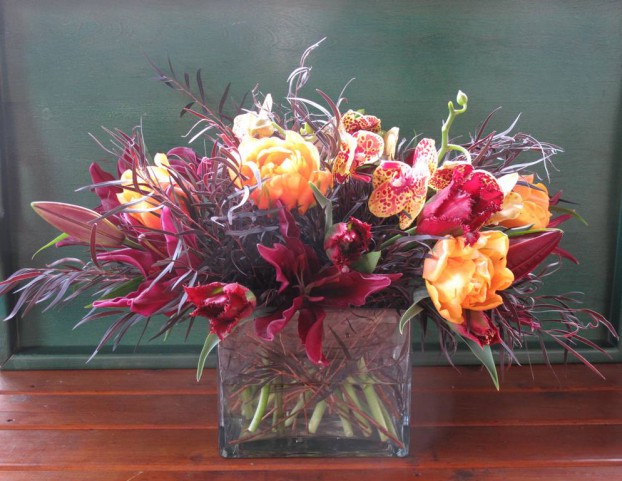
Happy Birthday, Steve!
Agonis foliage, grown by Mellano & Co., Carlsbad, CA
‘Mambo’ Oriental lilies, grown by Oregon Flowers, Aurora, OR
Dark purple parrot tulips, Sonshine Farms, Whidbey Island, WA
Orange double tulips, Ojeda Farms, Ethel, WA
Phalaenonpsis orchids, Orchidaceae, Walla Walla, WA

